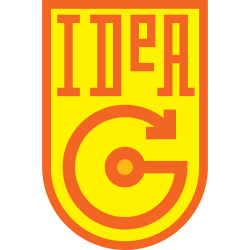If you are a game designer and attending IDEAG for the first time, you will find it useful to read these ten ‘rules’ that will enable you to make the most of your appointment.
#1 – Try it and give it a try (possibly in that order). IDEAG is based on the spirit of collaboration among participants. Therefore, don’t just sit at your table waiting for playtesters, but offer yourself to try other people’s games that intrigue you the most. It will prove to be an equally formative experience.
#2 – Get to know each other. IDEAG is an opportunity to get to know many people who share the same passion as you, with many ideas that will be useful to you. Creating new relationships is fruitful in any field, and game inventors are no exception!
#3 – Be sincere and polite. Game authors are normally very fond of their creatures, so always try to be polite and delicate when talking about problems encountered in games. This does not take away from the fact that it is important to be honest and to say clearly what you liked and what you did not like.
#4 – Don’t get defensive. Playtests serve to improve your games, and criticism for this purpose is more important than compliments. So don’t defend your creatures to the hilt, but rather encourage playtesters to be honest and express themselves on what you know to be the most sensitive aspects of your game.
#5 – Don’t necessarily finish every game. It is often not necessary to get to the end of a game to discover problems in a game and get some interesting feedback. This is especially true if you notice that playtesters are showing signs of fatigue. In this case, propose to stop the game and move on to the commentary phase. If you have a particularly long game with you (over an hour and a half), consider proposing a shortened version. If you are testing a game and realise that you will struggle to finish the game, perhaps because of problems you find obvious in the game, ask the author very politely if you can interrupt your game (or evaluate it with the other players), move on to the commenting phase.
#6 – Listen to the more experienced authors. Not all participants have the same experience. Some are just starting out, while others have several, or many, published games behind them. The advice of these people can be particularly valuable, so listen to them.
#7 – Talk to the publishers. Although the meeting is mainly a meeting between authors, among the participants there will also be several publishers, large and small. Approach them without being intrusive: it is not always possible to let them try out your games, but they are usually willing to have a chat. These can be very valuable to understand a little more about how the market is moving, and what kind of games they are looking for.
#8 – Attend the training sessions. Each year at IDEAG, some training sessions are organised on the two days of the event. Participation in these is highly recommended for everyone, and in particular for those who are less familiar with the world of game design.
#9 – Don’t occupy other people’s space. Each author has been allocated their own space, which they can use as they please. If you have more than one prototype, you will probably have to choose which one to keep on the table ready to play.
#10 – Collaborate with the organisation. IDEAG is a non-profit event, organised by gaming enthusiasts for other enthusiasts. If there is something that you think is not working, try to contact the organisers, and work with them to put things right. After the event, we’d appreciate your feedback to point out what went well and what can be improved next time.
